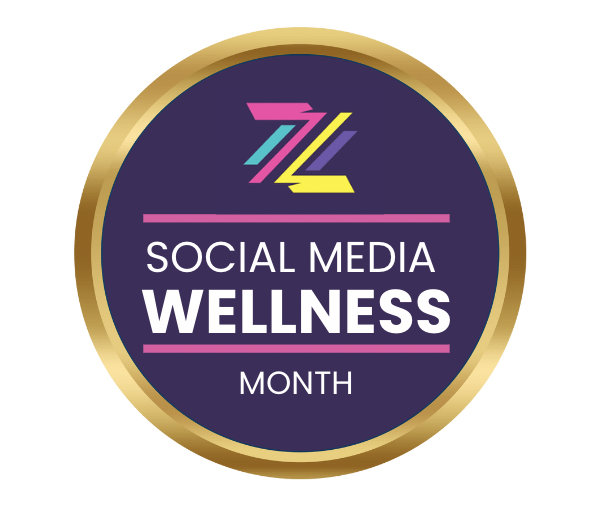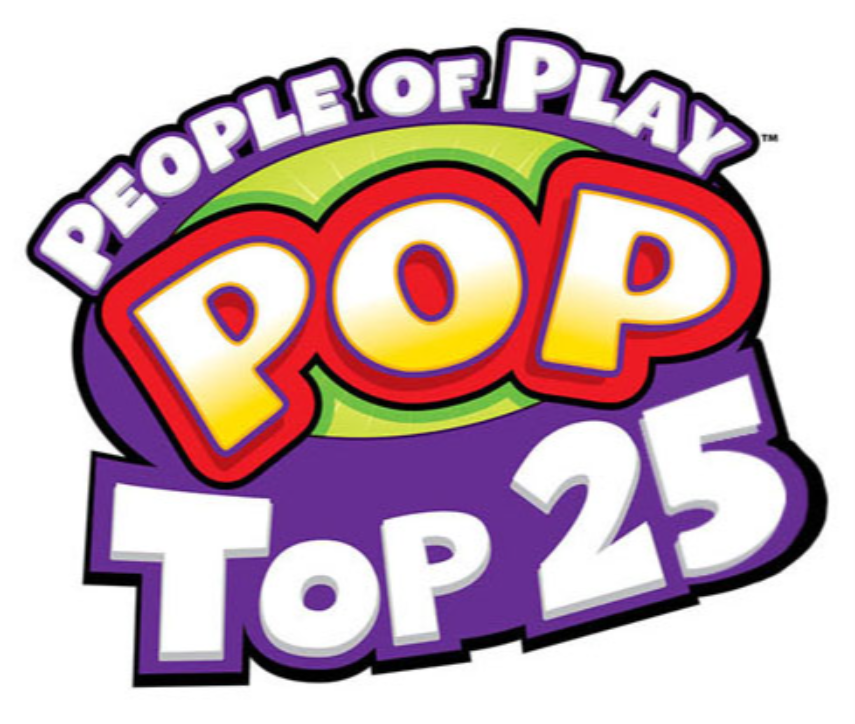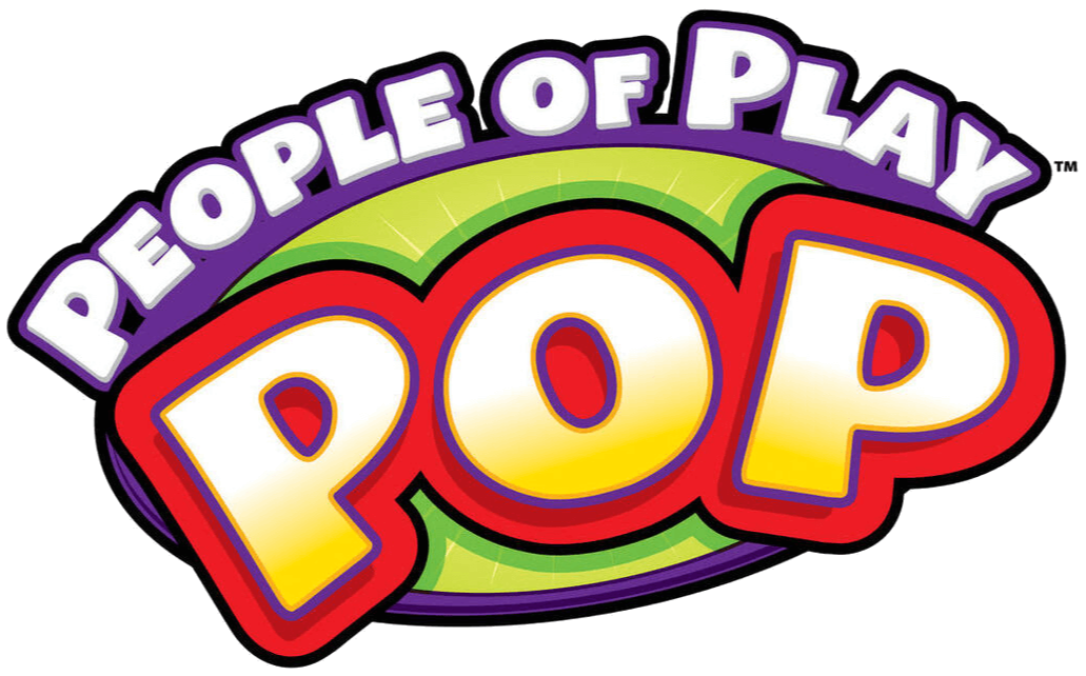Dr Zee: What the Doctor Orders When It Comes To Kids and Social Media
by The Bloom Report | 06 Jun 2024
Biographies and Interviews

If you have kids or know “kids these days,” you’ve developed a perspective about Social Media.
- “They love it! They are so creative and making such interesting connections!”
- “I don’t get it, we used to just go outside and play!”
- “I wish there was a better balance, a place that wasn’t so toxic, but its clearly something they want to do!”

Leah Ringelsetin, Co-Founder of Zigazoo, the world’s largest social network for kids interviews Zabina Bhasin M.D., child expert, entrepreneur, and psychiatrist who is deeply keyed into this issue. Today, they chat about the positive potential of social media with kids, the issues it poses and give insight on how parents can navigate this complex part of modern play.

Leah: As the market leader in safe social media, Zigazoo is hosting Social Media Wellness Month. This initiative aims to challenge mainstream social media companies to “do better” and to educate kids, parents, and lawmakers on how to build towards a healthier social media future. I am honored to host your perspectives today, Dr. Zee, as you have so much experience and insight to offer families to help them aim their kids for health and happiness when it comes to tech use. Would you like to share a little bit about your background and what you are working on right now?
Dr. Zee: Absolutely, it's a pleasure to be here. As a dedicated advocate for youth empowerment and mental health, I've spent many years working to create supportive environments for young people, both online and offline. My background spans various domains, including education, psychiatry, toys, and community engagement.
As a child psychiatrist with over two decades of experience in healthcare leadership, a Cornell-educated expert, and the founder and driving force behind In KidZ, a pioneering EdTech company that champions multicultural education and emotional wellness for children, my mission is deeply personal and professional. As a devoted mother and child expert, I believe in empowering and guiding the next generation through authentic engagement. My diverse experience allows me to have a dynamic and holistic approach to mental health and wellness advocacy.
My dream is to create a future with our kids rather than for them by ensuring that their voices and perspectives are heard and reflected in the world they live in. I stand as a formidable advocate, counselor, and ally, championing a future where every child's voice is not only heard but amplified, guaranteeing their potential and voice are realized to the fullest.
Currently, I'm deeply involved with the 'Listen to the KidZ' movement, where we focus on ensuring that the voices of our youth are heard and respected. We're actively developing a comprehensive curriculum for schools, athletics, and adults in the US and beyond that covers crucial topics like Mental Health (MESH Learning), Empowerment, Digital Literacy, Future Financial Mindset, and Acceptance and Belonging.
Our goal is to empower youth sports teams, private and public school entities, and entire school districts by providing them with access to curated curricula and programming. This involves working closely with administrators, teachers, students, and parents to create rules, regulations, and empowerment initiatives that truly reflect young people's needs and aspirations.
I'm also collaborating with various stakeholders to address the pressing issues of declining youth participation in sports, gender participation disparities, high churn rates in certain sports, lack of accessibility in youth sports, and the highest level of mental health issues ever seen before. Our mission is to foster an inclusive, engaging, and supportive environment for all young athletes.
Through initiatives like Digital Wellness Month, we can educate kids, parents, and lawmakers on how to build toward a healthier Digital Literacy future. It's about challenging mainstream platforms to do better and ensuring that our youth are equipped with the tools and knowledge they need to navigate the digital world safely and positively.
Leah: We polled Zigazoo kids and their biggest concern with social media was that they might encounter inappropriate content online. We also found that only 25% of kids talk to their parents when they struggle with something online and 30% don’t share these challenges with anyone. This shows us that communication and support is a big issue from the kids’ perspective. What do you see as the number one issue that kids and families are facing with social media use in the home?
Dr. Zee: Thank you for highlighting such an important concern. The number one issue that I see kids and families facing with social media use in the home is the lack of open, trust-based communication. The statistics you've shared underscore a significant gap between the challenges kids encounter online and the support they receive from their families.
When children don't feel comfortable discussing their online experiences, especially the negative ones, it creates a breeding ground for issues such as exposure to inappropriate content, cyberbullying, and mental health struggles. This communication gap can leave kids feeling isolated and unsupported, which can exacerbate the impact of negative online interactions.
To address this, families need to foster an environment where children feel safe and encouraged to talk about their online experiences. This involves educating parents about the digital world their children are navigating and equipping them with the tools to have open, non-judgmental conversations about it. It's crucial for parents to be proactive in initiating these discussions and to listen with empathy, understanding and most important no judgment.
Moreover, developing a shared understanding of digital boundaries and appropriate online behavior within the family can help. Setting clear expectations and guidelines for social media use can empower kids to make safer choices online and feel more confident in seeking help when they need it.
Ultimately, bridging this communication gap requires a concerted effort from both parents and children. Parents need to be approachable and informed, while children need to feel that their concerns are taken seriously and addressed with care. By working together, we can create a healthier, more supportive environment for kids to thrive in both their online and offline lives.
Leah: We created Zigazoo because we saw a great potential for creativity, friendship and growth through social media if designed with safety and positivity at the core. We know that social media is part of the fabric of socialization for kids of this generation, so rather than deny that, we need to provide them with a better place to learn about it and engage with it in healthy ways. When interacting in a safe haven like Zigazoo where there is moderated content, positive-only feedback and a community of authenticated peers, we have been delighted by the passions, relationships and incredible creativity that Zigazoo kids have unlocked. What opportunities do you see for kids and families with the responsible use of this technology?
Dr. Zee: When social media is designed with safety and positivity at its core, as you’ve done with Zigazoo, it opens up a world of opportunities for kids and families.
First and foremost, responsible use of technology can significantly enhance creativity. Platforms like Zigazoo provide a space for children to express themselves artistically, explore new interests, and share their creations with a supportive community. This not only boosts their confidence but also encourages them to take pride in their unique talents and abilities.
Another major opportunity is building meaningful relationships. Safe, moderated environments allow children to connect with their peers based on shared interests and positive interactions. This can lead to lasting friendships and a sense of belonging, which are crucial for emotional and social development.
Furthermore, responsible social media use can be an incredible educational tool. It can expose kids to new ideas, cultures, and perspectives, broadening their understanding of the world. Platforms like Zigazoo can offer interactive learning experiences that are both fun and informative, helping kids develop critical thinking and digital literacy skills.
For families, this technology provides a valuable opportunity to engage with their children’s digital lives positively. It offers parents a chance to understand the content their kids are consuming and creating, facilitating open discussions about online experiences and digital citizenship. This can strengthen family bonds and ensure that children feel supported and guided as they navigate the digital landscape.
Overall, with platforms like Zigazoo, we have the chance to harness the power of social media for good. By prioritizing safety, positivity, and responsible use, we can create enriching experiences that foster creativity, build relationships, and enhance learning for kids and families alike.
Leah: We have had some phenomenal conversations with experts about social and behaviorally based parameters for guiding healthy social media and tech use. It has been so fascinating for me to listen to you talk about concepts like the mimicry mechanism and optical and muscular regulation in relation to screen time. What brain-based tips can you share with parents to help their kids stay regulated in regards to technology use?
Dr. Zee: When it comes to helping kids stay regulated with technology use, understanding the brain's responses to screen time can be incredibly beneficial. Here are a few brain-based tips for parents:
- Mimicry Mechanism: Children often learn behaviors by mimicking those around them. Parents can set a positive example by modeling healthy tech habits. If kids see their parents balancing screen time with other activities like reading, exercising, or spending time outdoors, they are more likely to adopt similar behaviors.
- Optical and Muscular Regulation: Extended screen time can strain the eyes and muscles. Implementing the 20-20-20 rule can help: every 20 minutes, encourage your child to look at something 20 feet away for at least 20 seconds. This helps reduce eye strain and gives the brain a brief rest.
- Structured Screen Time: The brain thrives on routine and predictability. Establishing specific times for screen use can help regulate children's tech habits. Absolutely, here's an example tailored for school kids, middle school kids, and teens:
School Kids (Elementary Age): set a direction that screens can only be used after all homework is completed and chores are done. Additionally, limit screen time to one hour in the evening, ensuring there's plenty of time for other activities like playing outside or reading a book before bed. This will encourage better sleep as well.
Middle School Kids: set a direction that screens can be used after all homework, practice or any family responsibilities are finished. Limit screen time to a maximum of two hours in the evening, with a break after every 30 minutes of use. Encourage involvement in extracurricular activities, such going outside and being with friends and even activities with family member, to balance screen time with social and physical engagement.
Teens: set a direction that screens are allowed after all assigned tasks are done. As teens' lives get more involved with digital time for school and at home, they will naturally gravitate towards social media. Rather than attacking or restricting them, guide them with understanding. Help them see that excessive screen time might delay other important tasks, and when necessary, phones and video games may need to be paused.
This is a pivotal age where responsibility and trust need to be developed. As adults, we can provide guidance and support, but open communication is key. Without it, we won't truly understand what’s happening in our teens' lives. Remember, this age group is our top priority. We need to actively listen to them and empower them to manage their digital world responsibly.
Establish a limit of two to three hours of screen time in the evening, with at least one break for physical activity or relaxation. Encourage participation in hobbies, part-time jobs, or volunteer work to help manage screen time and promote a well-rounded lifestyle. This structure can reduce impulsive screen use and create a healthier balance.
- Engage in Physical Activity: Physical movement is essential for brain health. Encourage regular breaks from screen time for physical activities. This can include anything from a quick walk, stretching exercises, to more organized sports. Physical activity increases blood flow to the brain, helping to improve focus and mood.
- Mindfulness and Relaxation Techniques: Teaching kids mindfulness and relaxation techniques can help them manage the overstimulation that often comes with screen use. Simple practices like deep breathing, meditation, or even a few minutes of quiet reflection can help reset their brain and body.
- Tech-Free Zones and Times: Designating certain areas and times as tech-free can help the brain disconnect and recharge. For instance, make bedrooms or family dinner times free of screens. This encourages face-to-face interaction and allows the brain to wind down, especially before sleep.
- Encourage Offline Hobbies: Help your child discover and nurture offline hobbies and interests. Do it with them! Engaging in offline activities, such as reading, drawing, playing a musical instrument, or participating in sports, can naturally limit screen time and promote a more balanced lifestyle.
By incorporating these brain-based strategies, parents can help their children develop healthier relationships with technology. It's all about creating a balanced environment where screen time is just one of many enriching activities in their daily lives.
Leah: At Zigazoo we are all about lifting kids’ voices, letting them lead and challenge one another. Making an emotionally safe space means making sure that kids feel comfortable being authentic, taking risks and growing. It is a very hopeful thing to see the way that Zigazoo kids support each other and really appreciate knowing that no one can hurt their feelings when they share what they’ve created. You have a whole initiative called “listen to the kidz, “ encourage parents to start with their kids’ voices to find solutions. How would you recommend parents let their kids take the lead in conversations about social media?
Dr. Zee: With the “Listen to the KidZ” initiative, we emphasize starting with kids' voices to find solutions. Here are a few recommendations for parents to let their kids take the lead in conversations about social media:
- Create an Open Dialogue: Encourage your kids to share their experiences, thoughts, and feelings about social media without fear of judgment. Ask open-ended questions and listen actively to their responses. Let them know their perspectives are valued.
- Empower Their Choices: Allow kids to express what they enjoy about social media and what concerns they might have. Encourage them to think critically about their digital habits and make their own decisions regarding screen time and online interactions.
- Facilitate Discussions: Instead of dictating rules, facilitate discussions where kids can contribute to setting guidelines for social media use. This collaborative approach helps them feel more responsible and committed to following the agreed-upon rules.
- Encourage Problem-Solving: When issues arise, involve your kids in finding solutions. Ask for their ideas on how to handle negative experiences online, such as cyberbullying or encountering inappropriate content. This builds their confidence and problem-solving skills. But I have always said Make sure you are the advocate for your child and never leave them behind.
- Support Their Interests: Show genuine interest in their online activities. Whether it’s a creative project they’re working on or a new app they’re excited about, be supportive and engaged. This strengthens your connection and makes them more likely to share openly.
- Promote Positive Role Models: Highlight examples of positive behavior and role models online. Discuss how these individuals use social media responsibly and the impact they have. This can inspire kids to emulate similar positive behavior.
- Model Respectful Behavior: Demonstrate respectful and mindful social media use in your own digital interactions. Kids learn a lot from observing adults, so model the behavior you wish to see in them.
By actively listening to your kids and letting them take the lead, you foster a sense of responsibility and self-awareness. This empowers them to navigate the digital world with confidence and resilience.
Leah: I know that I got involved with social media and kids with my own kids’ and students’ digital future in mind and with a vision to take tips from the classroom (positive behavioral agreements, vetted content and project-based-learning challenges) to design a social media space just for kids. I knew that if we offered kids only the toxic apps designed for adults, social media would be emotionally devastating for kids and I would not be letting my own kids use it! Why are you so passionate about this issue?
Dr. Zee: As a psychiatrist trained to help children and as a parent of Generation Alpha kids myself, I see the world starting over in many ways. We, as adults, have the responsibility to launch this new era with our children. My passion for this work comes from both my professional training and my personal life, where I am constantly inspired by the youth who look up to me.
I am passionate because I see the incredible potential that a safe and supportive digital environment holds for our children. It’s not just about protecting them from harm but also about empowering them to express themselves, connect with others, and grow in meaningful ways. The work I do is deeply rooted in my commitment to the mental health and well-being of young people, and it’s fueled by my desire to ensure that the digital world they navigate is as enriching and positive as possible.
As parents and educators, we need to listen to our kids and let them lead. By incorporating their voices and perspectives, we can create a digital landscape that genuinely supports their growth and development. This is why I’m so dedicated to this cause—it’s about giving our children the tools and opportunities they need to thrive in an increasingly digital world. It’s about launching a new era with them, ensuring that they feel heard, respected, and empowered every step of the way.
Leah: If you time traveled to 20 years in the future, when your children and mine are grown adults, if we get this social media conversation right, what are the best outcomes you will be able to observe for our kids and what does social technology look like?
Dr. Zee: This is the dream: to achieve this, the work and commitment of adults are essential. We must give time to the youth, empower their voices, and truly listen to them.
If we time-traveled 20 years into the future and got the social media conversation right, we’d see our children as adults with a healthy relationship with technology. They’d have strong emotional intelligence, be responsible digital citizens, and engage in lifelong learning and creativity. Their mental well-being would be robust, and they’d maintain meaningful personal connections.
Social technology would prioritize user well-being, privacy, and security. Algorithms would foster positive interactions and support personal growth. Platforms would emphasize active participation, involving users in community initiatives and digital governance. By getting this right today, we ensure a future where our kids thrive both online and offline.
For the the Tech Compnaies if they are relly looking to create a safe and authentic platforms. I envision for the companies to:
- Emphasize Privacy and Security: User data will be protected with the highest standards, ensuring that privacy is a fundamental right.
- Foster Positive Interactions: Algorithms will promote positive and constructive content, reducing the spread of misinformation and harmful material.
- Support Personal Growth: Social technology will integrate educational and developmental tools, encouraging users to pursue their passions and improve their skills.
- Encourage Active Participation: Platforms will be designed to involve users in meaningful ways, from creating content to participating in community initiatives and digital governance.
Social technology will be a force for good in the future, enhancing the lives of our children and creating a digital environment that reflects our best values. By getting the social media conversation right today, we lay the foundation for a future where our kids can thrive, both online and offline.

Recent Blogs
Recent Blogs

Industry Commentary, Op-Ed
The Top 25 POP Profiles of 2025

Biographies and Interviews
Ben Krenz Talks Moose Games, The Rise of Kidults, and More!

The Bloom Report
The Bloom Report Issue Archive

Play Through History
The Lives They Lived: Rest in Play Edition 2025

The Bloom Report
Toy and Game People Obituaries - RIP - Rest in Play
See more
Recent Wiki

BOOK REVIEWS
Game Review: Cats & Boxes

PEOPLE
Ana Maria, Founder of The Magical Underland Inc., Rings in the Holidays with a new kind of Christmas Tree

BOOK REVIEWS
Game Review: IQ Circle

PEOPLE
Catching up with Eric Olsen, The Inventor of Flip 7 and Co-Creator of Messy Table Games

BOOK REVIEWS
Book Review: Happytecture by Anna Devís & Daniel Rueda
See more
POP's Got Talent

POP Entertainment
Randy Klimpert Shares his Ukulele Collection

POP Entertainment
Steve Casino Peanut Art

POP Entertainment
Everyone's Talking about POP!

POP Entertainment
Princess Etch - a Multi-Talented Etch A Sketch Artist

POP Entertainment
Joseph Herscher of Joseph' s Machines.
See more
Recent POPcast

Hidden Role: The Brains Behind your Favorite Games
Connie Vogelmann designed Apiary & Wyrmspan!

Hidden Role: The Brains Behind your Favorite Games
Bob Fuhrer... Is THE Crocodile Dentist!

Hidden Role: The Brains Behind your Favorite Games
Tom Dusenberry... Bought Atari, Wizards of the Coast, and Avalon Hill!

Hidden Role: The Brains Behind your Favorite Games
Matt Leacock created Pandemic... the game!

Hidden Role: The Brains Behind your Favorite Games
Scott Brown and Tim Swindle... are Launching a New Sport!
See more
POPDuos

POPDuos: Interviews with Legends and Leaders
POPDuo: Richard Dickson, Mattel’s President & COO, and Kedar Narayan, Young Inventor Challenge AMB

POPDuos: Interviews with Legends and Leaders
POPDuo: Will Shortz and Josh Wardle

POPDuos: Legends and Leaders Explore Creativity
POP Duo: Elan Lee, Co-Founder, Exploding Kittens.and Jeff Probst, Host and Exec Producer, Survivor

POPDuos: Legends and Leaders Explore Creativity
POP Duo: David Fuhrer, MNG Director, Blue Sq Innovations & Shawn Green, past Dodgers & Mets MLB Star

POPDuos: Legends and Leaders Explore Creativity
POP Duo: Bob Fuhrer, Founder, Nextoy and Tom Fazio, Golf Course Designer
See more















